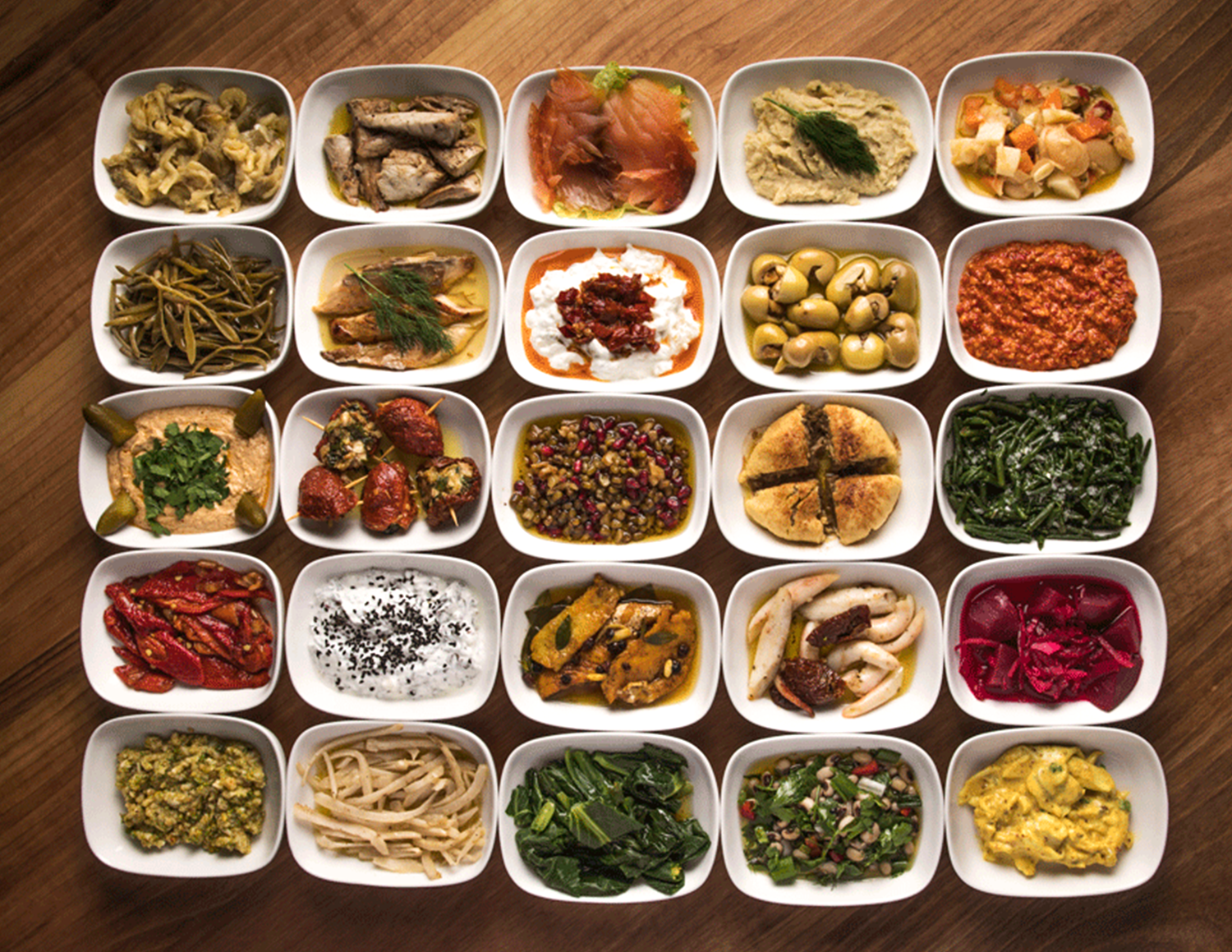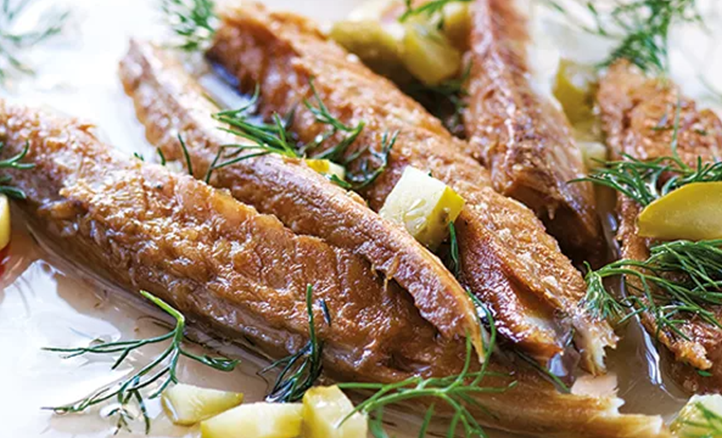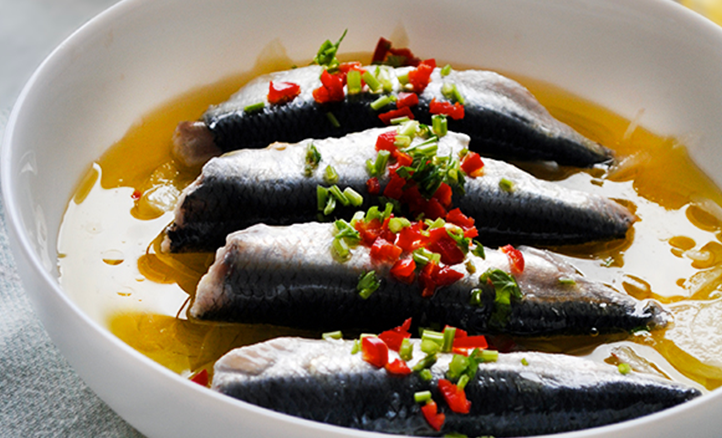Meyhane is Sharing
Variety of mezzes, source: cibalikapi.com
The dramatic rise in the number of health-conscious consumers has impacted culinary cultures and habits all around the globe. One consequence of this trend for the Anglo-Saxon world – a world known for its large portions – has been the proliferation of restaurants that offer a healthier dining experience, serving their customers a variety of small plates to be shared accompanying the alcoholic beverage of their choosing. This health-conscious dining experience is also economically viable for the establishment – customers’ ordering a variety of dishes in small portions can have a soaring effect on profits – and desirable for chefs, who find ample room to experiment with traditional ingredients and unleash their creativity.
A Mediterranean – and, Russian – Custom
Sharing plates (and favorite alcoholic beverages) has historically been a defining feature of various culinary cultures worldwide. The best-known examples of this custom unsurprisingly come from the Mediterranean, where eating and drinking is a more laid-back, pleasurable, and extended experience.
Cicchetti Venezia 1, source: wikicommons
Cicchetti Venezia 2, source: wikicommons
Cicchetti are small dishes typically served in bàcari (cicchetti bars) in Venice often alongside a glass of local white wine called ombra (shadow – a heritage from the days when wine was sold in stands under the shade and as the sun changed position, the stands were moved so they could stay under the shade). Common cicchetti include: fried mozzarella, gorgonzola, calamari, artichoke hearts, crostini, marinated seafood, olives, prosciutto, and melons.
Left: Tapas en Barcelona, source: wikicommons, Right: Tapas, source: tapasfusion.com
Tapas, originally from Andalucia in southern Spain, are perhaps the most famous of shared Mediterranean dishes. Often served free with a purchase of beer, wine, or sherry (as they increase drink sales) the most common tapas include platters of cured meats, cheeses, olives, croquettes, potatoes, and seafood.
Left: Pintxo 1, source: latroupe.com, Right: Pintxos San Sebastián, source: barcelo.com
Pintxo are traditional Basque small dishes served in bars and taverns. Often eaten alongside a glass of beer or wine, a pintxo consists of a slice of bread upon which an ingredient of a mixture of ingredients is spiked with a toothpick, (which gives the dish its name pintxo, meaning “spike”). Although almost anything can be served on a slice of bread, among the most common pintxo in Basque Country are gilda (hot peppers, olives, and anchovies), boquerones (marinated anchovies), idiazabal (cheese), and cow cheeks.
Zakuski plates, source: tripadvisor.in
Zakuski table, source: wamu.org
The most famous of the shared dishes outside the Mediterranean is the Russian zakuski, which also features in Fyodor Dostoevsky’s The Idiot. Literally meaning “something to bite after,” zakuski often follows a shot of vodka whose effects it supposedly weakens. According to Russian-American author Anya von Bremzen, a typical zakuski table includes dilled pickles, herring, hard-boiled eggs, spring onions, Olivier salad, boiled potatoes, and sauerkraut.
What, and More Importantly, How to Share?
Ahmet Rasim, source: wikipedia
Albanian Liver, source: hikayeliyemekler.com
Circassian Chicken, source: cookingorgeous.com
Ciroz, source: bizimtarifler.com
Sardines, source: dokuzuncubulut.com
Fried Mussels, source: lezzet.com.tr
Cacik, source: ardaninmutfagi.com
Last but certainly not least, there is the meyhane – perhaps the sharing space par excellence; an institution that from its earliest days as phouskaria and taberna onwards has fundamentally existed as a space of sharing. As with pintxo, almost anything can be a mezze as long as it tastes good with rakı (and less often with wine), and over time, as people’s palates have changed, so have the mezzes. However, to give us an idea of what a typical mezze table from the turn of the century would include let’s lend an ear to the rakı aficionado and author Ahmed Rasim: Albanian liver (fried liver served with paprika, onions, and parsley), Circassian chicken (in a paprika and walnut sauce), çiroz (dried mackerel), sardines, fried mussels, pickles, cacık, pastrami, radishes, olives, feta cheese, bean salads or dishes, and melon.
Many European travelers noticed that sharing food epitomized Constantinople’s culinary culture. Lady Montagu and Julia Pardoe mentioned the large dinner tables, full of a variety of hot and cold dishes shared by the hosts and the guests, none of whom had individual plates. Likewise, Charles White noted that Istanbulites carried wooden spoons in their pockets and used them to dig in shared plates of food when invited.
Mezzes are not there to be gorged on but to be tasted.
More important than the types of dishes shared in the meyhane is how they’re shared. Almost every commentator on the meyhane draws attention to the fact that mezzes are not to fill up on but to taste. Rasim, for instance, deems it necessary to have a wide range of mezzes available on the table but insists that “it is adequate to taste each with the tip of your fork.” We come across similar sentiments and warnings as early as the end of the 16th century. Gelibolulu Mustafa Ali, one of the earliest figures to write on meyhane culture, believes there should be at least 50 dishes laid out but “not more than one single bite should be taken from any.” The doyen Istanbulite author Vefa Zat provides a concise and no-nonsense definition of the proper comportment towards mezzes: “It is unbecoming to attack the mezzes. They are not there to be gorged on but to be tasted. Eat slowly and in tiny amounts. After all, what truly matters with the mezze is sharing it with your loved ones.”
Almost every Ottoman account of meyhanes in the capital mentions habitués bringing mezzes from surrounding markets – sardines, fruits, pastrami, cheese, etc. They would hand these mezzes over to the owner who would prepare and serve them to every customer on the premises without charge. One of Rasim’s favorite drinking companions, Père Yaver, would come in the meyhane every afternoon looking more like a grocer than a customer, carrying all sorts of greens in his hands. He would ask the owner to distribute them among the customers but would only eat a couple of slices of melon as he believed no other dish enhanced the rakı experience like a fresh melon.
“Rakı is neither to be drunk alone nor with a crowd. You don’t drink rakı but sip it because it is not getting drunk but the conversation you are after.”
Similar sentiments are voiced when it comes to sharing a drink, particularly rakı, at the meyhane. This time, it is Rasim who provides us with the most concise and earnest guide to sharing: “Rakı is neither to be drunk alone nor with a crowd. A few treasured companions constitute the ideal rakı assembly. You don’t drink rakı but sip it because it is not getting drunk but the conversation you are after. And conversation with your treasured companions should last hours and nothing less.”
The emphasis, always already, is on sharing. It is not the drinks or the food that draw us to the meyhane but the companionship and camaraderie established through sharing. And without the revered friends with whom you share your joys, troubles, laughter, tears, memories, hopes, disappointments, fears – in short, without those comrades in front of whom you bare yourself and who bare themselves in front of you, a meyhane is not a home away from home but merely a building where food and drinks are served.
Friedrich Nietzsche once wrote, “Vision was not the intention behind the creation of the eye, but [it] appeared after chance had put the apparatus together.” Although it can be interpreted in countless ways – a fact that Nietzche would have delighted in – one of the truths that the statement draws attention to is the essential discrepancy between the contemporary use of an object or comportment and its original intended use or meaning. A similar argument can be easily made regarding sharing a drink. Seen as a sign of camaraderie today, at its origins during the Sumerians, sharing a drink signified a dramatically different set of emotions. People drank from the same clay jar and even shared cups not to emphasize the strength of their companionship but as a security measure – so afraid were they of being poisoned by their foes or friends they shared a drink with that Sumerians would insist every single person present would drink from the same jar or even cup.
Sharing a Journey
Cahit Sitki Taranci, source: siir.me
In one of his short stories, Turkish poet and author Cahit Sıtkı Tarancı resembled meyhane to a ship and the habitués to its passengers. The tavern the story was set in was a meyhane Tarancı frequented in real life – not because of the mezzes offered or the ambiance inside, but because of the headwaiter, Mavromatis. “With a posture reminding you not of a creditor ready to strangle you but an aide-de-camp waiting for the pleasure to serve, and his ever-present smile,” Mavromatis could fill a marble table with all your favorite mezzes and rakı in a few minutes before you could even utter a few words. Mavromatis was the captain, Tarancı says, and he took the poet and his fellow frequenters on amazing journeys. And as habitués, they trusted Mavromatis as a passenger would trust her captain – knowing without a doubt that they would always be safe in their home away from home.
Princes' Islands Ferry, source: kikantik.com
Tarancı’s meyhane was represented by a ship on a symbolic register but from the late 19th century to the late 1940s, ferries working on the Kadıköy, Princes’ Islands, and Bosporus routes functioned as meyhanes during the evening hours. Once the sun set down, the ferry canteens would start serving rakı and a choice of mezzes including cheese, sardines, olives, and pastrami, and passengers often spent the night drinking and singing while traveling through one of the most scenic routes imaginable.
Further Readings
François Georgeon. Rakının Ülkesinde: Osmanlı İmparatorluğu’ndan Erdoğan Türkiye’sine Şarap ve Alkol (14. - 21. Yüzyıllar). İstanbul: İletişim. 2021.
İhsan Erdinçli. “16. Yüzyıldan 20 Yüzyıla Osmanlı İstanbul’unda Meyhane Mezeleri ve Yiyecekleri,” TAD, 42/S, 151-180. 2023.
Meyhane İhtisas Kitabı. A’dan Z’ye Meyhane: Nedir, Nasıl Çalışır? İstanbul: Anason İşleri. 2022.
















